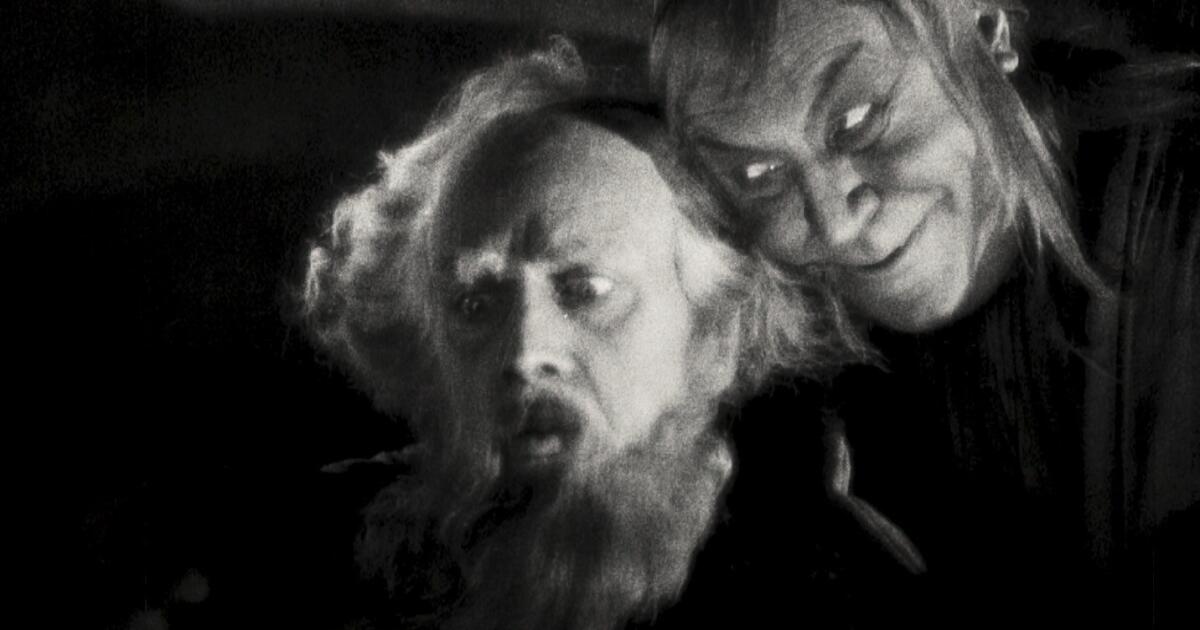Since it first premiered in 1926, F.W. Murnau’s “Faust” has been lauded as one of the greatest silent films ever made. And in the century that’s followed, striking a deal with the devil has been one of cinema’s most enduring tropes.
“Him,” the Jordan Peele-produced horror film reaching theaters Friday, is the latest testament to the fact that, in Hollywood at least, the devil’s offer never goes out of style.
It tells the story of an aspiring professional football player, Cameron Cade (Tyriq Withers), who gets invited to train at a secluded compound under famed quarterback Isaiah White (Marlon Wayans). But Cade eventually realizes what is meant by the question he keeps getting asked: “What are you willing to sacrifice?”
“People are so fixated with the whole selling your soul to the devil and they really think that it’s a man in a suit who’s like, ‘Sign the dotted line,’” said Julia Fox, who plays White’s wife. “I think that selling your soul to the devil is a metaphor for selling out and doing things that you don’t want to do, compromising your morals and values for a paycheck.”
Like “Him,” Faustian stories in cinema are often billed as horror. Much like the literary and artistic retellings of the German fable, from Marlowe and Goethe to the song “The Devil Went Down to Georgia,” film adaptations span place, decade and genre — from the cult Keanu Reeves’ DC Comics adaptation, “Constantine,” to Brendan Fraser’s 2000 rom-com “Bedazzled,” a remake of the 1967 film of the same name that starred Raquel Welch.
The devil can promise money — as in “The Devil and Daniel Webster,” the 1941 post-Great Depression takedown of greed — or fame, a la Jack Black’s 2006 musical comedy, “Tenacious D in The Pick of Destiny.”
“It’s pretty much everywhere once you start looking,” said Kirsten Thompson, a professor of film studies at Seattle University. “We all want to have eternal life or youth or power or status. And the various iterations of the myth sometimes emphasize different things.”
“Him” isn’t even the first Faustian film set against the backdrop of sports. “Damn Yankees,” the 1958 adaptation of the Bob Fosse-choreographed Broadway show, tells the story of a diehard baseball fan who makes a devilish pact to help his team.
Murnau’s ‘Faust’ legacy
Although the 1926 “Faust” isn’t the oldest cinematic retelling of the legend — French filmmaker Georges Méliès made a handful of adaptations beginning in the 1890s — Murnau’s movie has the greatest legacy.
“The film has these very striking set pieces that are, visually, enormously iconographic and influential on subsequent silent cinema, including American cinema,” Thompson said.
Speaking with the Associated Press last year to promote his adaptation of “Nosferatu” (the original vampire tale was also made by Murnau, in 1922), Robert Eggers testified to the ways in which “Faust” has influenced him as a director.
“Filmmaking — it didn’t really get better than that,” he said.
Murnau’s “Faust” follows its titular protagonist, a faithful alchemist who despairs over a deadly, seemingly unstoppable plague. He eventually meets the demon Mephisto — legend often refers to him as Mephistopheles — who convinces Faust to do a trial-run pact to renounce God in exchange for the power to help the infirm village.
But Faust’s demonic deal is found out when a crowd realizes he cannot look upon a cross. Despondent, Faust plans to kill himself, but is stopped by Mephisto, who comes back with another offer: The demon will give the elderly alchemist back his youth.
Origins of the devil’s offer
It’s unclear when exactly the idea that humans could strike a deal with the demonic materialized, according to Joseph Laycock, a professor of religion who studies Satanism and demonic belief at Texas State University.
The idea that a powerful supernatural being could grant wishes or help humans exists in pre-Islamic Arabic traditions, but most Western depictions of this kind of myth borrow from Christian theology.
“Humans and demons each have something the other wants. We want this power. We want control over the natural world. The demons have it and we don’t. But the demons want our souls,” Laycock said. “The Faust legend is kind of ready to be told as soon as this Christian demonology emerges.”
One clue into the origins of a Satanic bargain lies within the “Malleus Maleficarum,” often translated as the “Hammer of Witches,” a 15th century German Catholic theological text on demonology.
In it, God has limited Satan’s power, Laycock explained. But, “there’s this loophole. And the loophole is, if a demon makes a pact with a human, the demon gets to do all the stuff it couldn’t normally do.”
This period around the Reformation was a “golden age” for possession, exorcism and witch-hunting in Europe, Laycock said, which sets the stage for the Faust legend to materialize.
In the 1800s, Johann Wolfgang von Goethe adapted the Faust story into a two-part tragic play, converting the German legend into a literary giant that would have tremendous influence on the Western world, Thompson argues.
She compares Goethe’s cinematic influence to works from Shakespeare and stories like “Sherlock Holmes,” which have also been repeatedly retold. “Canonical works of literature in different languages are adapted over and over again,” she said.
Fauria writes for the Associated Press. Associated Press religion coverage receives support through the AP’s collaboration with The Conversation US, with funding from Lilly Endowment Inc.


